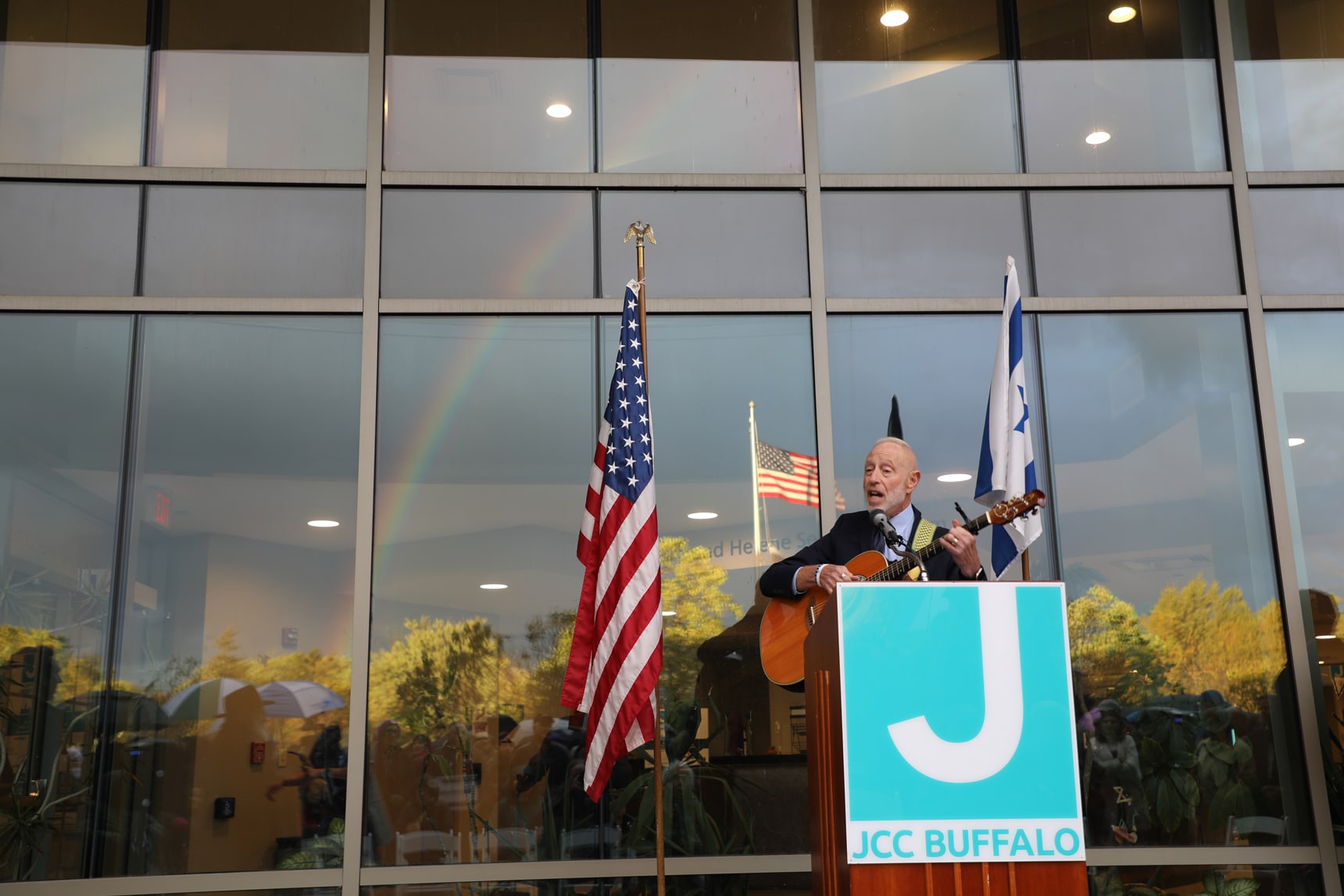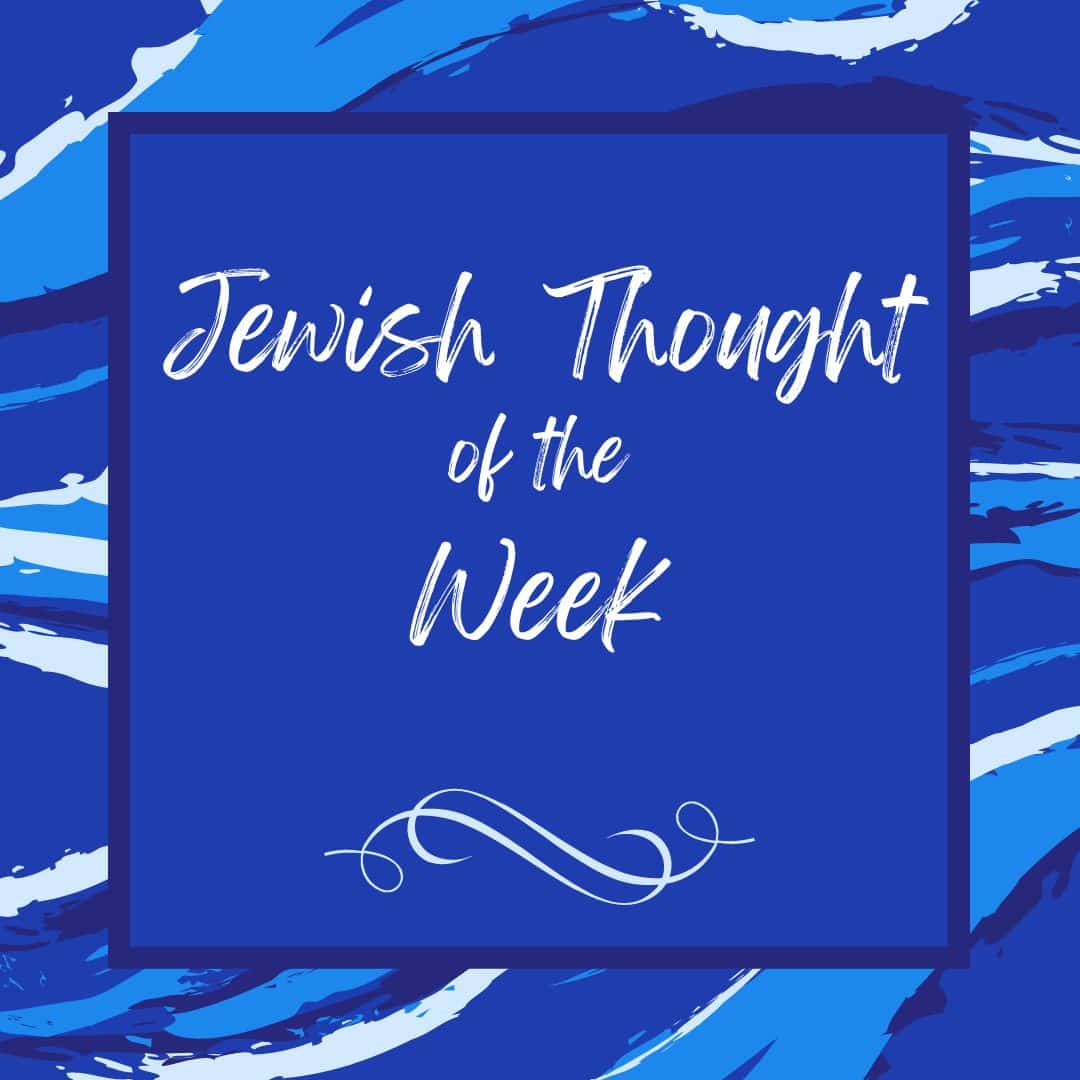By Rabbi Sara Rich
We stood together in front of the JCC in Getzville on October 9 for the Israel Solidarity Rally. As is the way in Buffalo, the weather had been vacillating all day between sun, almost-rain, and rain. We were reeling from the news of the Hamas terrorist attacks on Israel just two days before, and we needed to stand together, to show our support for Israel, and to comfort one another in our fear and mourning.
Cantor Mark Horowitz opened the ceremony beautifully, singing Hinei Mah Tov U’Mah Nayim, “How good it is for us to be together,” reflecting how much we needed one another in that moment. As he sang, the heads of members of the crowd facing the JCC building slowly began to turn and look up at the sky behind them. A beautiful, fully arched rainbow stretched across the sky. People gasped, pointed it out to their neighbor, took pictures and videos with their phones.

Personally, the rainbow moved me to tears. For the first time since hearing the news, I was able to let my tears fall like rain. My parents will tell you that I entered my “rainbow phase” when I was four, but never outgrew it. That year, my mother organized an incredible rainbow themed birthday party, with a rainbow decorated cake, and stations where we experimented with mixing colors and tie-dyed paper towels. I had rainbow decorations in my room, rainbow patterned clothing and accessories, and even rainbow sneakers that I replaced with the same shoe in a larger size when I outgrew the first pair.
Today, I still gravitate towards rainbows and rainbow colors. For me, rainbows express the wonder and beauty of God’s beautifully designed world. It feels like permission to live boldly. If God can paint the sky, then we too should be bright and colorful in our creations. And after a rainstorm is often when we need this reminder the most. After the dark and stormy, light and color can appear.
Our Torah portion this week, Noach, offers a deeper meaning to the rainbow than just its aesthetic value. After the flood that God unleashes to destroy a corrupt world, God places a rainbow in the sky, and makes the following declaration: “I will maintain My covenant with you: never again shall all flesh be cut off by the waters of a flood, and never again shall there be a flood to destroy the earth. This is the sign that I set for the covenant between Me and you, and every living creature with you, for all ages to come” (Gen. 9:11-12).
The Hebrew word for rainbow, keshet, is also the word for a bow used as a weapon to shoot arrows. Ramban, the great 12th century Spanish Torah commentator, explains that the rainbow is a sign of peace from God. “The rainbow was created to show that no one is shooting from heaven. This is the way of warriors, to turn their bow over in their hands to indicate that they are calling for peace to those who are fighting against them.” The downward direction of the rainbow’s arch expresses that, though God sees and disapproves of violent behavior in our world, God will not destroy humanity in order to eradicate evil.
The expression “all sunshine and rainbows” falsely betrays a rainbow as a carefree symbol of cheer. On the contrary, a rainbow is not a naïve splash of color in the cloudy sky. In the symbol of a rainbow, God is telling us that though violence persists, the only way to fully eradicate violence is to destroy humanity itself, and God is not willing to do that. Rather, the rainbow comes with a promise: God is with us as we seek peace. God remembers us during these dark times, and offers us a symbol that we cannot miss, so long as we remember to turn our eyes to the heavens.
P.S. – If you could use a little cheer right now during these hard times – enjoy this ebullient performance of Olé, Olé by Izhar Cohen at the 1985 Eurovision competition. “One person to another, weaves a rainbow. Peace has 1,000 colors” (full lyrics here).
Sara Rich is the rabbi at Temple Beth Tzedek.

